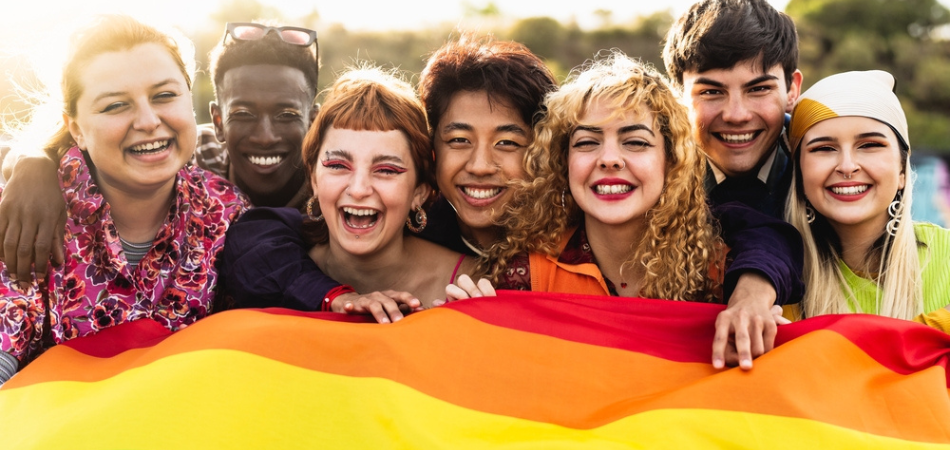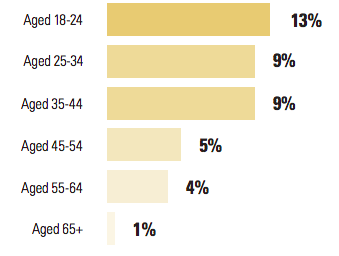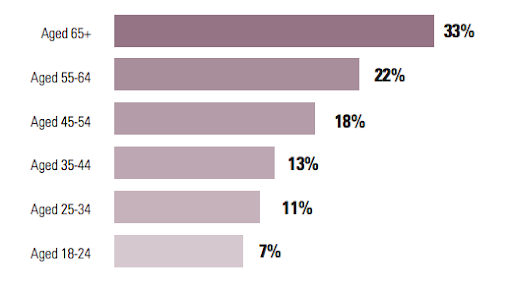Last Updated:
March 27th, 2025

Drug use and addiction do not discriminate, and every community, including the LGBTQ+ Community, is affected by these issues. Despite this universality, it is important to look at the unique challenges and pressures of each community to ensure inclusivity, understanding and tailored intervention. Approaching this subject requires utmost sensitivity, as it entails navigating complex intersections of identity, societal pressures and health, but it can have major benefits for anyone who is struggling with substance abuse issues.
This article aims to shed light on the prevalence of drug use within the LGBTQ+ community. By understanding the nuanced factors at play, we can better address the needs of the community and provide support in the most empathetic and effective manner possible.
Concerning trends: Analysing the data
A multitude of studies, both on a global scale and within the UK, have found that drug use within the LGBTQ+ community is notably higher compared to the general population. One 2023 report by the Substance Abuse and Mental Health Services Administration (SAMHSA) found that American adults who identify as LGBTQ+ were two to three times more likely to have used illicit drugs in the past year compared to their heterosexual counterparts. The UK’s Stonewall report (2018) mirrored this discrepancy, finding that 9% of LGBTQ+ people in Britain took drugs at least once a month for a year versus 2.6% of non-LGBTQ+ people.
Percentage of LGBTQ+ people who take drugs at least once a month

This trend isn’t restricted to just illicit substances. Alcohol consumption is also more prevalent, with the Stonewall report finding that one in six LGBTQ+ individuals drank alcohol every day compared to one in ten in the general population.
Percentage of LGBTQ+ people who drink alcohol almost every day

American studies have also found that lifetime substance abuse disorders could affect 20-30% of LGBTQ+ individuals compared to 9% of the general population. While these trends are deeply worrying, it is essential to delve deeper than just numbers. Behind the statistics lies a complex web of factors and experiences unique to the LGBTQ+ community that can contribute to these elevated rates of substance use and abuse.
Root causes: Unpacking the higher rates
The reasons behind the higher prevalence of drug use within the LGBTQ+ community are multifaceted and deeply rooted in societal structures and prejudices. While everyone’s route to drug addiction and abuse is different, there are common threads which affect many LGBTQ+ individuals.
These include:
Mental health and stigma
The emotional toll of grappling with one’s sexuality or gender identity, particularly in unsupportive environments, can be significant. Many individuals within the LGBTQ+ community experience feelings of isolation, discrimination or bullying. This emotional stress can be exacerbated by internal struggles like internalised homophobia or transphobia, with such challenges can sometimes lead to substance use as a coping mechanism.
Social environment
Some LGBTQ+ individuals may find solace and acceptance in nightlife or party scenes where drug use can be more commonplace. This is not to say that the entire community leans towards these scenes, but for those who do, it can be a space of liberation, which also exposes them to higher levels of substance availability.
Trauma
Rates of trauma, be it emotional, physical or sexual, are higher in LGBTQ+ populations. Traumatic experiences, particularly in formative years, can lead to substance use disorders later in life. Discrimination is a major cause of trauma, and sadly, many LGBTQ+ individuals experience discrimination at some point in their lives. According to the Stonewall report:
- One in five LGBTQ+ individuals experienced a hate crime in the past year
- Two in five transgender individuals were victims of a hate crime in the same period
- One in six LGBTQ+ people experienced discrimination in a social setting such as a bar, club or restaurant
- One in ten LGBTQ+ individuals found difficulties finding a property to rent or buy
- One in four BAME LGBTQ+ individuals experienced discrimination when accessing social services
Lack of tailored health services
Historically, healthcare services, including addiction and mental health support, have not always been inclusive or understanding of LGBTQ+ specific needs. This gap can make it challenging for individuals to seek help or find appropriate resources tailored to their unique experiences.
The Stonewall report found that one in eight LGBTQ+ individuals received unequal care,with this number rising to 32% of transgender people. One participant in the report gave this shocking account of their experience:
surgery and then went on to compare me to being a
paedophile as if being trans is the same thing.”
Chemsex
This term describes the use of specific drugs (like mephedrone, poppers and GHB) before or during sex to enhance the experience or reduce inhibitions. The rise in chemsex, particularly in London, has been a cause of concern since 2011, when numbers of chemsex-related hospital admissions hit a point that the NHS began devising specific treatment strategies. Chemsex can significantly increase the risks of overdosing, contracting STIs or developing a drug addiction.
Gender identity
Transgender and non-binary individuals, who often face more acute discrimination, even within the LGBTQ+ community, have reported elevated levels of substance use. Their experiences with discrimination, body dysphoria and societal pressures can contribute to the heightened need for escapism through substance use.
Intersectionality
Within the LGBTQ+ community, the experiences can vary significantly based on race, gender and other identity facets. For example, BAME LGBTQ+ community members may face additional societal pressures and prejudices, layering further stress and potential factors for increased substance use. Many BAME communities have higher rates of drug use and addiction, so BAME LGBTQ+ individuals are at high risk in already high-risk areas.
Obstacles to addiction treatment
Understanding the root causes is crucial for awareness and developing compassionate, tailored strategies to address and reduce drug use and its associated harms. For many in the LGBTQ+ community, seeking help for drug addiction is not straightforward. The journey towards recovery is often mired with unique challenges that stem from societal prejudices and personal apprehensions, including:
Fear of discrimination
A significant barrier is the fear of facing discrimination or bias in treatment settings. As noted above, many LGBTQ+ individuals have experienced prejudice in various forms throughout their lives. This history can make them wary of entering environments where their sexuality or gender identity may not be understood or respected.
Lack of specialised care
Standard addiction treatment programs may not always address the unique challenges faced by LGBTQ+ individuals, such as coming out, gender transitioning or handling discrimination. The absence of specialised care can make these programmes feel less effective or relevant.
Financial constraints
Economic disparities prevalent within the LGBTQ+ community, especially among transgender individuals who may face employment difficulties due to workplace discrimination, can make affording private treatment challenging.
Potential solutions
While these barriers can be difficult to overcome, addressing them is crucial to ensuring that everyone, regardless of their sexual orientation or gender identity, has equal access to effective addiction treatment. UKAT is committed to bridging these gaps and fostering an environment of inclusivity and understanding, and it is important that the broader healthcare community and society in general has the same commitment. Potential solutions include:
LGBTQ+ specific programmes
Healthcare and addiction recovery organisations can develop and promote treatment programmes tailored to the specific needs of the LGBTQ+ community. These programmes would take into account the unique challenges faced by this group and provide targeted support.
Training and sensitisation
All healthcare providers, including those in addiction treatment, should undergo regular training to foster LGBTQ+ inclusivity. By ensuring that staff are sensitive to and knowledgeable about LGBTQ+ issues, healthcare facilities can create a welcoming and understanding environment.
Financial assistance
Financial aid, private health insurance and sliding-scale payment options can all make addiction treatment more accessible to those within the LGBTQ+ community who face economic challenges.
Community outreach
Establishing strong ties with LGBTQ+ community centres and organisations can help in raising awareness about the available support and treatment options.
Through this comprehensive, collaborative effort, LGBTQ+ individuals can feel more confident about seeking help and taking the first steps to overcoming drug abuse and addiction.
Final thoughts
The prevalence of drug use within the LGBTQ+ community is not just a statistic; it’s a poignant reflection of the challenges and hardships faced by this vibrant community. Whether the result of societal discrimination, internalised feelings or the nuances of navigating one’s identity, the numbers underscore the urgent need for understanding and compassion. As we continue to evolve as a society, it is paramount to ensure that every individual, regardless of their sexuality or gender identity, has access to the resources, support and respect they deserve.
If you or a loved one are grappling with addiction, help is available. Contact UKAT today and join an inclusive community of clients and recovery experts, all working together for a brighter future.



